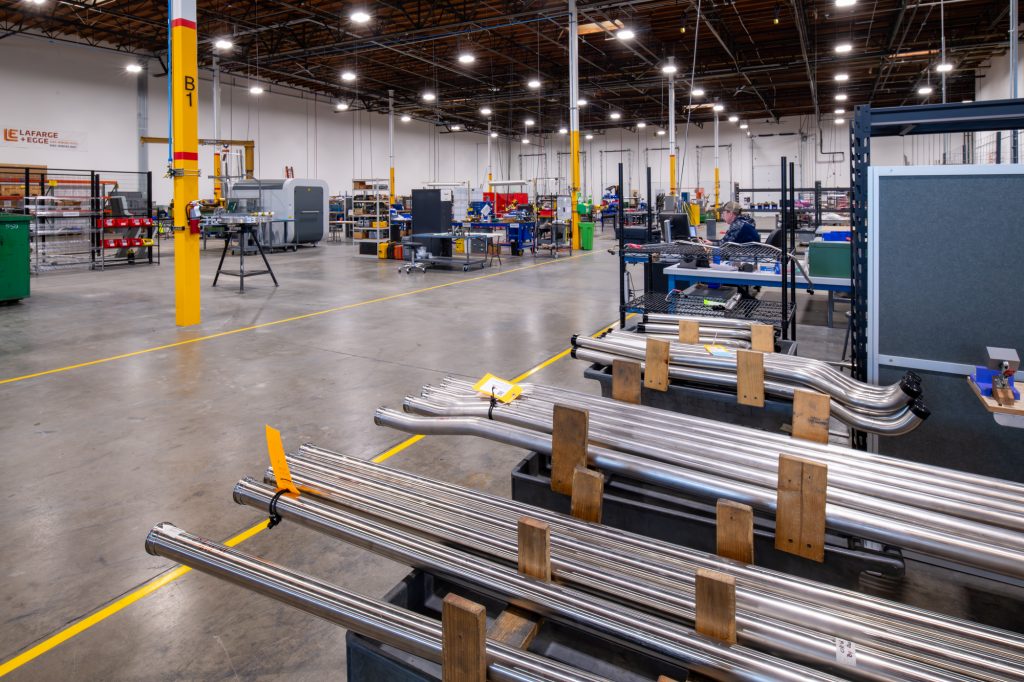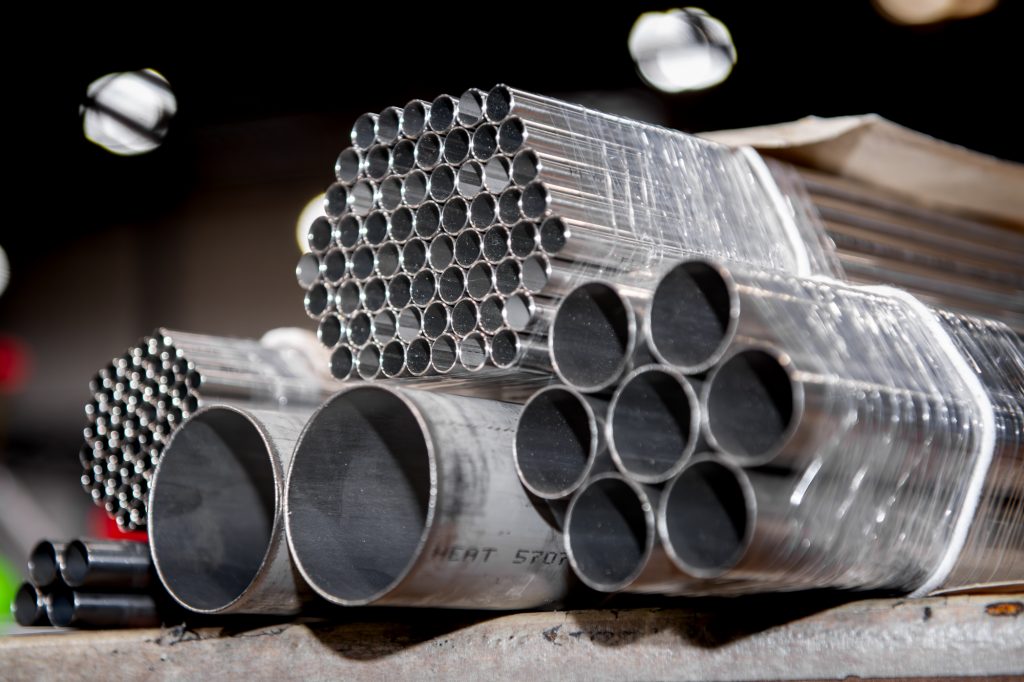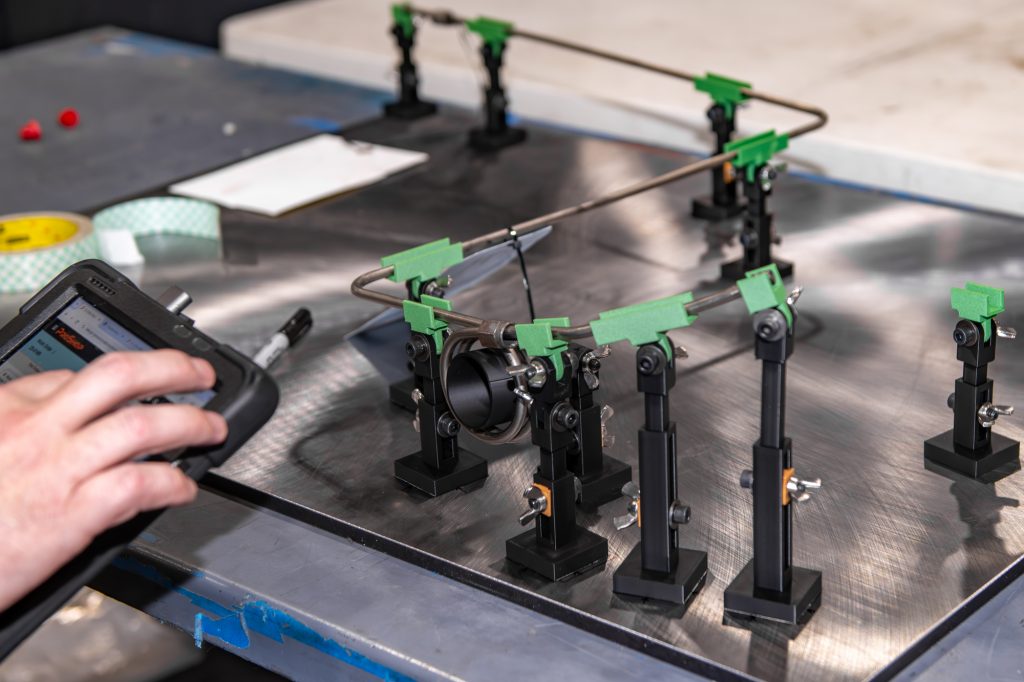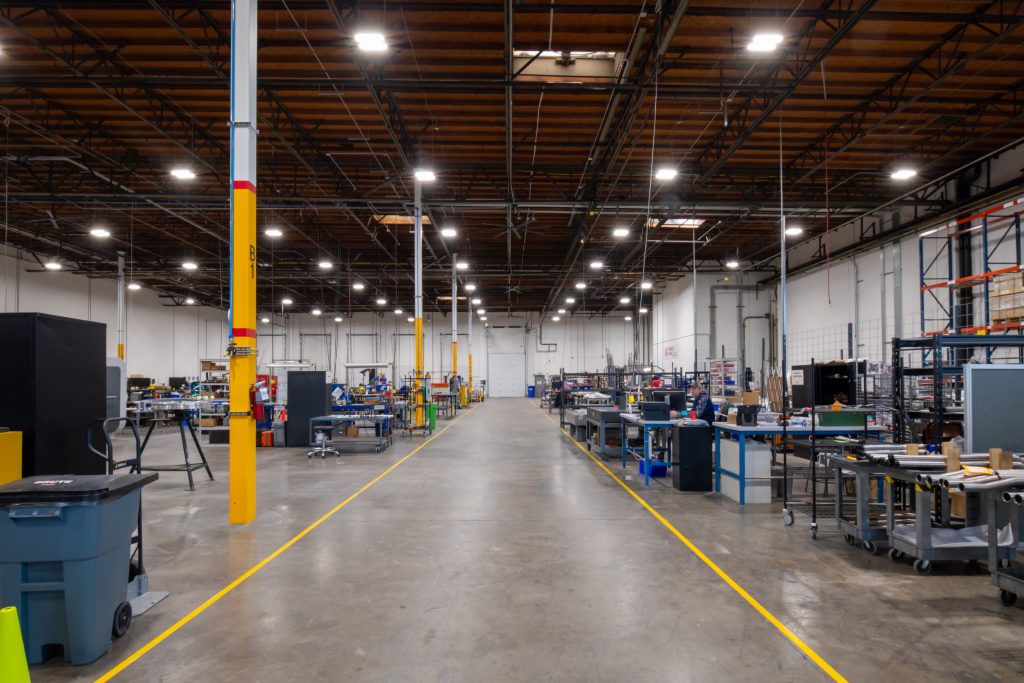Lafarge & Egge specializes in aerospace tube bending and welding from two locations – Everett, WA and Clackamas, OR
By Jennifer Ferrero
Welding and tube bending are special skills that can take years to master, according to Bryan Luttrell, president of Lafarge and Egge (L&E). The company operates a tube bending division in Everett, Wash., and a welding division (purchased in 2012) in Clackamas, Oregon.


In the aerospace industry, work can be tedious, and in specific roles, such as welding, Luttrell said the burnout rate can be high. In their business, they specialize in bending and welding high-pressure tool assemblies. He said it takes time to develop qualified welders who specialize in different metals and types of welding. Also, he mentioned that there are many traveling welders nowadays who go from business to business. “In aerospace you need either production volume, or a lot of certifications.” But he said even when they’ve had attrition with welders through movement to other companies, over time, many people have come back to them.
“There is a battle of mental (health) too with welding. People don’t want to sit in a weld mask their whole life, they want to do something else and grow into a new role. We mix up the work to keep them interested and keep them focused. If you help us, we’ll grow you too.” They continue to invest in employees and promote from within.

The bending of metal tubes and welding involves the use of advanced techniques and materials to create components for critical aerospace systems. However, he views the ability to retain employees in his business as crucial through the team approach. He said, for example, when keeping welders on board, he offers them company-paid certifications to enhance their resumes.
The business is going strong, with one cited challenge, according to Luttrell, being the name. The company is over 60 years old and was named after the founders. Nowadays, they still go by the full name of Lafarge & Egge but have shortened it to L&E in many applications. He said the challenge is often, “How to pronounce the names Lafarge and Egge?” The business, named after the two founders, is frequently mistaken for the French cement business Lafarge. Although, Luttrell said most know them as a precision welder and tube bender. A private equity firm owns the company.
Luttrell was drawn to the company due to the “autonomy and accountability” he has in the job. After spending time in the Army and then as an entrepreneur early in his career, he has now been with the company for 11 years. He said he is a natural leader, as he aims to “earn trust and respect.” He has learned from leaders that he has had, and he cares “deeply about employees and being honest with them.” Like most leaders, though, he explained that his role does include making tough decisions.
The company now has 41 employees, comprising welders, benders, machinists, inspectors, and professional and administrative staff. While they don’t exclusively employ engineers, many employees “act as engineers in designing and making tools and interpolating models.” He said part of their growth in the coming years will be to bring in more engineers. This aligns with Luttrell’s strategy of promoting from within and investing in employee development. They currently have $10 million in sales.
Program Account Manager, Estimator, and Planner Mike Pieckiel has been with L&E for just a year, but he is excited about his new role and says his background in the Navy has helped him assimilate. In the Navy, he worked in electronics, followed by a career in civilian production management. In this role, he enjoys being in a customer-facing position. He said he wishes he could talk to customers more than he does, as most communication is via email. But he noted interestingly that a non-customer had recently contacted him, “a guy with a Jeep,” about how to bend a tube for his vehicle.
However, Pieckiel said that what L&E does best is solving complex problems for customers. He said the team environment of the company allows them to “at the drop of a hat, gather and say, ‘how do we do this – how can we get it done?’” He said that sometimes a challenge doesn’t emerge until mid-project, and his job is to ensure they stay on track and on time, instilling confidence in their problem-solving capabilities.

The company likes to promote employees into leadership roles from within. Here are other key team members and where they started in the company:
- David Lacy, VP (runs both locations) and reports to Luttrell. He started in pressure testing
- Nicole White, GM (runs the Clackamas Welding plant) and started in accounting
- Tyler Haist, GM (runs the Everett L&E plant), and started in tube bending
- Chris Kilmer, (runs the welding at Clackamas) and started as a welder
- Gourav Singh (started as a QA Admin, now runs QA).
Automation is an emergent factor for most northwest aerospace manufacturers. For L&E, Luttrell said they’d need a higher and repeat volume program to implement robotic welding. He said, “You can imagine what to do; you have to have the dexterity to hold and twist, and the tooling process has to be so succinct in high volume, repeat projects; it can be hundreds of thousands to get that going; with better robot dexterity and processes.” He noted the precision welding they conduct that is made for “mission critical and flight safety critical systems, molds, and structures.”
Luttrell said they are always looking realistically at AI or high-volume repetitive projects, which makes the most sense to his team to “use AI and other technologies to make a business case for them.”
The Quality Manager, Gourav Partap Singh, also known as “Gavy,” grew up in India and earned a degree in Mechanical Engineering. He joined L&E in 2021 and began as a logistics associate in shipping and receiving. Since then, he has progressed rapidly in quality assurance management. Singh said he enjoys working with Luttrell and described him as a coach to the team. and appreciates Luttrell’s direct communication style because he said, “If you are doing something wrong, you should be notified; that’s what a leader does.” However, he noted that Luttrell takes it a step further and continues to follow up to ensure that problems or issues are resolved.
The business relocated from Lynnwood to Everett, Wash., in 2024, occupying 31,000 square feet of manufacturing space and 10,000 square feet of administrative space. They bought an existing facility, which they retrofitted with new walls, lights, and ceilings. Luttrell said they made it look “clean and shiny,” demonstrating their commitment to providing a positive work environment. They are also investing in a new employee break room, fostering a sense of optimism and positivity.
Luttrell is a pragmatist in that he acknowledges the current workforce challenges and notes that when he grew up, he had a welding program in his high school, which is no longer the norm. He said they’ll hire inexperienced people and train them with their system “as long as you are hungry and willing.” However, he noted that things move quickly, and it is a physically demanding job.
Luttrell said that the strengths of the business are longevity in aerospace and defense and their experience with tube bending and welding which is, “not a conventional trade.” He also noted their certifications, including AS9100, NADCAP, and ITAR, as well as their ability to ship overseas to Australia, China, Taiwan, and Canada – Canada is their largest export market.
Pieckel said Boeing is their largest customer, and he works directly with them. He said he routinely consults with their engineers on design for manufacturing. He said that because L&E has a good reputation with Boeing, “They are willing to listen to our input and incorporate it (into designs).” He said his background in electronics enables him to read and interpret schematics, and he understands the engineering principles behind the tubes.
Pieckel added that with the move into the new facility, they acquired new tube bending machines and expanded capabilities through expedited processing, maintaining the same level of quality. “We’ve increased capabilities for fittings for the end of tubes and part marking capabilities; setting up a more comprehensive assembly area; now adding other insulation or sensors to it, can do that work in-house as well.”
It takes a team approach across two locations to provide high-quality tube bending and welding for aerospace applications. Company leadership works to invest in employees and promote from within. Like most suppliers there is a good deal of competition for skilled labor, and they work hard to foster a family-oriented environment to keep everyone engaged.



